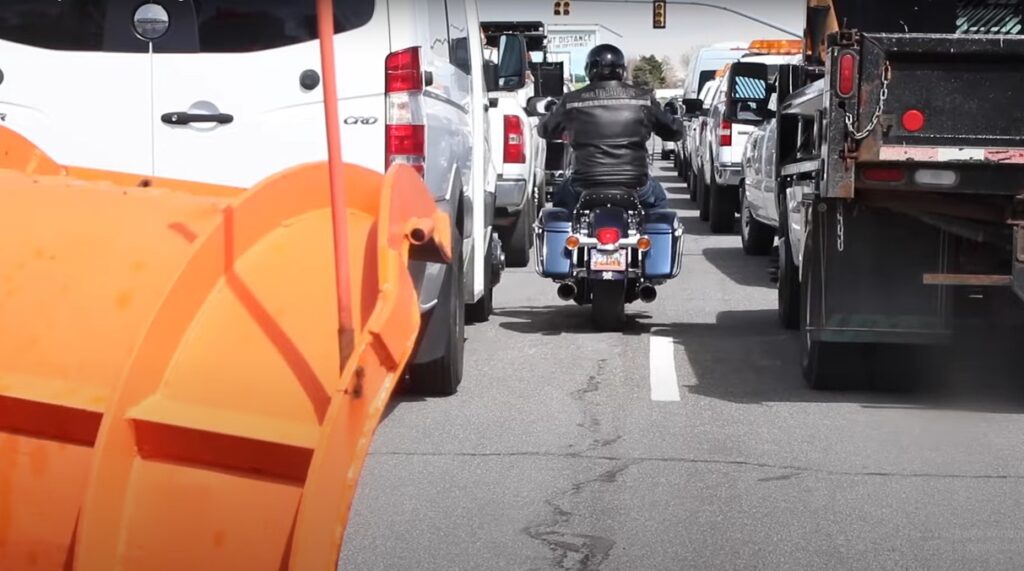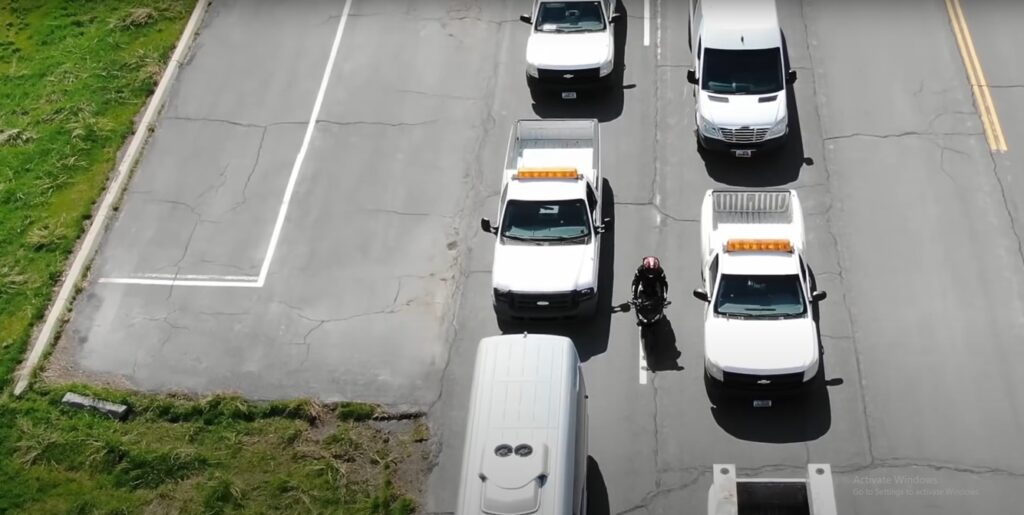What Is Lane Splitting?
Lane splitting is a riding technique where a motorcyclist travels between lanes of slow-moving or stopped traffic, usually no more than about 10 mph faster than surrounding vehicles. Once traffic begins flowing normally, the rider merges back into a standard lane.
The practice helps reduce congestion and protect riders from being rear-ended in stop-and-go traffic—but its legality varies widely across the U.S.
Where Is Lane Splitting Legal?
Most states either explicitly prohibit or do not address motorcycle lane splitting in their traffic codes. However, a handful of states have passed specific legislation to permit either lane splitting or its slower variation, lane filtering.
The states that currently allow or recognize these practices are limited—but growing—as safety data from California and abroad continues to influence policymakers.
What States Is Lane Splitting Legal?
California
Status: Fully legalized.
Details: In 2016, Assembly Bill 51 (AB-51) formally defined and legalized lane splitting. The California Highway Patrol (CHP) later issued safety guidelines for both riders and drivers.
Impact: California remains the model for other states considering similar laws.
Utah
Status: Lane splitting is not legal, but lane filtering is allowed.
Details: A 2019 law permits riders to move between lanes of stopped vehicles at intersections, but only at very low speeds.
Arizona
Status: Limited lane filtering allowed (since 2022).
Details: Riders may pass between lanes of stopped traffic on roads with posted limits of 45 mph or below—mainly at traffic lights—to prevent rear-end collisions.
Montana
Status: Allows filtering under slow-speed conditions.
Details: As of 2021, filtering is permitted when traffic moves at 10 mph or less, provided the rider does not exceed 20 mph.
Hawaii
Status: Prohibits traditional lane splitting but allows restricted shoulder use.
Details: Under limited circumstances, motorcyclists may use the shoulder to bypass congestion, a practice sometimes called “shoulder surfing.”

Is Lane Splitting Legal in My State?
Outside the states above, lane splitting legal states remain the exception rather than the rule.
Most U.S. states either:
- Explicitly ban lane splitting through traffic laws requiring all vehicles to stay within a single lane, or
- Leave the issue undefined, with law enforcement interpreting general lane-use laws to prohibit it.
States that Explicitly Prohibit Lane Splitting
Massachusetts: Bans operating between lanes; all vehicles must stay within marked boundaries.
Most other states: While silent on lane splitting, they enforce similar “single-lane” statutes.
States Considering Legalization
Texas has repeatedly proposed lane splitting bills since 2015, but none have advanced beyond committee. Oregon, Washington, and others have considered similar legislation, often backed by motorcyclist-advocacy groups citing California’s success and reduced accident rates.
Which States Allow Lane Splitting or Filtering?
As of 2025, the only motorcycle lane splitting legal states or filtering-permissive states are:
- California (full lane splitting)
- Utah, Arizona, Montana (limited filtering)
- Hawaii (restricted shoulder use)
Riders should always verify current laws before practicing lane splitting at a stop light or in moving traffic, as regulations may change annually through state legislation.

Purpose and Benefits of Lane Splitting
When practiced responsibly, lane splitting can improve both safety and traffic flow.
Key benefits include:
- Safety: Reduces the risk of rear-end collisions in congested conditions.
- Traffic efficiency: Helps motorcycles clear traffic jams faster, freeing road space for cars.
- Heat management: Prevents engine overheating during long idle periods in high temperatures.
- Environmental benefit: Reduces emissions from motorcycles idling in slow traffic.
These advantages explain why advocates continue to push for lane splitting legal states, especially in congested urban regions.
Best Practices for Lane Splitting
If you ride in a state that allows lane splitting or lane filtering legal states, follow these best practices for safety and compliance:
- Stay between the left-most lanes, where vehicles change lanes less frequently.
- Maintain at least two feet of clearance on each side of your bike.
- Keep speeds reasonable—no more than 10 mph faster than surrounding vehicles.
- Watch for sudden lane changes and opening car doors.
- Cover your brakes and clutch for instant reaction time.
- Merge back into traffic as soon as conditions speed up.
Responsible riding helps keep the practice safe and ensures it remains legal where permitted.
Lane Splitting vs. Lane Filtering
Although often used interchangeably, the two terms have distinct meanings:
Lane Splitting: Moving between lanes of slow-moving or stopped vehicles on highways or major roads.
Lane Filtering: Moving between lanes of fully stopped vehicles at intersections, then merging in front once the light changes.
Both techniques aim to reduce congestion and improve motorcycle safety, but filtering occurs only in low-speed or stationary traffic.
Potential Hazards of Lane Splitting
While lane splitting can be safer in gridlock than sitting in a blind spot, risks remain. Drivers may change lanes suddenly, open doors, or drift within their lane. Other hazards include wide mirrors, protruding cargo, poor road surfaces, and weather-related visibility issues.
Riders should maintain awareness, proper gear, and an escape route at all times. The lane splitting speed limit should always align with local laws and safe-riding conditions.
Motorcycle Insurance and Lane Splitting Laws
If you ride in a lane splitting legal state, review your motorcycle insurance policy carefully. Some carriers factor in whether lane splitting or lane filtering is permitted when underwriting coverage. Comprehensive motorcycle policies can help protect you against collision, liability, and medical costs if an incident occurs while filtering or splitting.
Discuss your coverage options with an experienced agent to ensure you remain fully protected under your state’s specific laws.
Riding Responsibly in Lane Splitting States
Understanding and respecting motorcycle lane splitting laws helps protect all road users. By following safety guidelines, staying visible, and keeping your speed low, riders can demonstrate that lane splitting and filtering can coexist safely with conventional traffic.
As more states study California’s results, responsible riding may pave the way for broader legalization across the U.S.—proving that shared roads work best when everyone rides smart.





